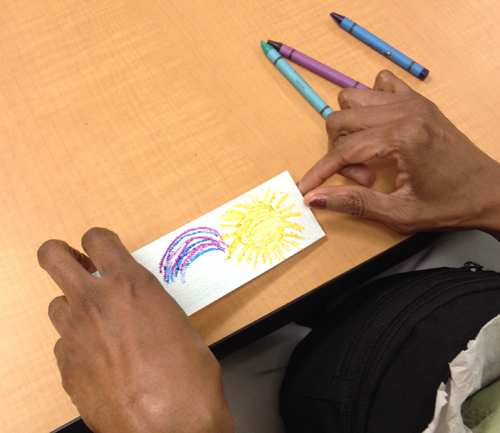Happy Banned Books Week!
Titles I've read are in bold, and favorites are denoted with an *. How many banned books have you read? Which would you recommend?
Harry Potter (series), by J.K. Rowling
Alice series, by Phyllis Reynolds Naylor*
The Chocolate War, by Robert Cormier
And Tango Makes Three, by Justin Richardson/Peter Parnell
Of Mice and Men, by John Steinbeck*
I Know Why the Caged Bird Sings, by Maya Angelou
Scary Stories (series), by Alvin Schwartz
His Dark Materials (series), by Philip Pullman
ttyl; ttfn; l8r g8r (series), by Lauren Myracle
The Perks of Being a Wallflower, by Stephen Chbosky
Fallen Angels, by Walter Dean Myers
It’s Perfectly Normal, by Robie Harris
Captain Underpants (series), by Dav Pilkey
The Adventures of Huckleberry Finn, by Mark Twain
The Bluest Eye, by Toni Morrison
Forever, by Judy Blume
The Color Purple, by Alice Walker
Go Ask Alice, by Anonymous*
Catcher in the Rye, by J.D. Salinger
King and King, by Linda de Haan
To Kill A Mockingbird, by Harper Lee*
Gossip Girl (series), by Cecily von Ziegesar
The Giver, by Lois Lowry*
In the Night Kitchen, by Maurice Sendak
Killing Mr. Griffen, by Lois Duncan
Beloved, by Toni Morrison
My Brother Sam Is Dead, by James Lincoln Collier
Bridge To Terabithia, by Katherine Paterson
The Face on the Milk Carton, by Caroline B. Cooney*
We All Fall Down, by Robert Cormier
What My Mother Doesn’t Know, by Sonya Sones
Bless Me, Ultima, by Rudolfo Anaya
Snow Falling on Cedars, by David Guterson
The Earth, My Butt, and Other Big, Round Things, by Carolyn Mackler
Angus, Thongs, and Full Frontal Snogging, by Louise Rennison
Brave New World, by Aldous Huxley
It’s So Amazing, by Robie Harris
Arming America, by Michael Bellasiles
Kaffir Boy, by Mark Mathabane
Life is Funny, by E.R. Frank
Whale Talk, by Chris Crutcher
The Fighting Ground, by Avi
Blubber, by Judy Blume
Athletic Shorts, by Chris Crutcher
Crazy Lady, by Jane Leslie Conly
Slaughterhouse-Five, by Kurt Vonnegut
The Adventures of Super Diaper Baby: The First Graphic Novel by George Beard and Harold Hutchins, the creators of Captain Underpants, by Dav Pilkey
Rainbow Boys, by Alex Sanchez
One Flew Over the Cuckoo’s Nest, by Ken Kesey
The Kite Runner, by Khaled Hosseini
Daughters of Eve, by Lois Duncan
The Great Gilly Hopkins, by Katherine Paterson
You Hear Me?, by Betsy Franco
The Facts Speak for Themselves, by Brock Cole
Summer of My German Soldier, by Bette Green*
When Dad Killed Mom, by Julius Lester
Blood and Chocolate, by Annette Curtis Klause
Fat Kid Rules the World, by K.L. Going
Olive’s Ocean, by Kevin Henkes
Speak, by Laurie Halse Anderson
Draw Me A Star, by Eric Carle
The Stupids (series), by Harry Allard
The Terrorist, by Caroline B. Cooney*
Mick Harte Was Here, by Barbara Park*
The Things They Carried, by Tim O’Brien
Roll of Thunder, Hear My Cry, by Mildred Taylor
A Time to Kill, by John Grisham
Always Running, by Luis Rodriguez
Fahrenheit 451, by Ray Bradbury
Harris and Me, by Gary Paulsen
Junie B. Jones (series), by Barbara Park
Song of Solomon, by Toni Morrison
What’s Happening to My Body Book, by Lynda Madaras
The Lovely Bones, by Alice Sebold*
Anastasia (series), by Lois Lowry*
A Prayer for Owen Meany, by John Irving
Crazy: A Novel, by Benjamin Lebert
The Joy of Gay Sex, by Dr. Charles Silverstein
The Upstairs Room, by Johanna Reiss
A Day No Pigs Would Die, by Robert Newton Peck
Black Boy, by Richard Wright
Deal With It!, by Esther Drill
Detour for Emmy, by Marilyn Reynolds
So Far From the Bamboo Grove, by Yoko Watkins
Staying Fat for Sarah Byrnes, by Chris Crutcher
Cut, by Patricia McCormick
Tiger Eyes, by Judy Blume
The Handmaid’s Tale, by Margaret Atwood
Friday Night Lights, by H.G. Bissenger
A Wrinkle in Time, by Madeline L’Engle
Julie of the Wolves, by Jean Craighead George
The Boy Who Lost His Face, by Louis Sachar
Bumps in the Night, by Harry Allard
Goosebumps (series), by R.L. Stine
Shade’s Children, by Garth Nix
Grendel, by John Gardner
The House of the Spirits, by Isabel Allende
I Saw Esau, by Iona Opte
Are You There, God? It’s Me, Margaret, by Judy Blume*
America: A Novel, by E.R. Frank
List from
American Library Association.



























